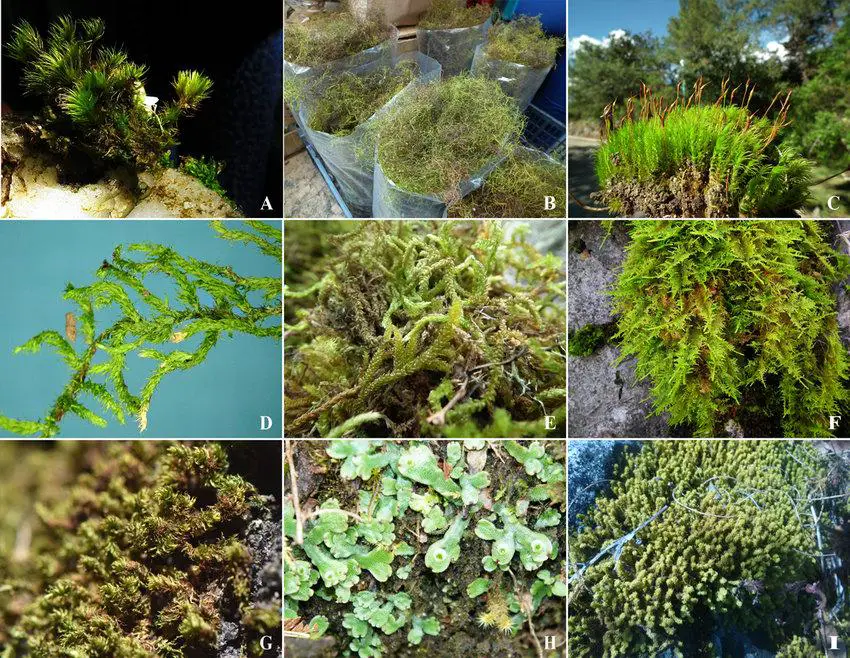Unveiling the Enigmatic Campylopus Moss: A Journey into Its Emerald Realm
Affiliate Disclaimer: As an affiliate, we may earn a small commission when you make a purchase from any of the links on this page at no additional cost to you!

Some-bryophytes-species-used-in-Mexico-with-ceremonial-A-Campylopus-sp-B.jpg from: https://www.researchgate.net/figure/Some-bryophytes-species-used-in-Mexico-with-ceremonial-A-Campylopus-sp-B_fig2_348170082
Introduction
In the vast and captivating world of bryophytes, one particular moss species stands out as a true marvel – the Campylopus smaragdinus (Brid.) A.Jaeger. Belonging to the Leucobryaceae family, this moss is commonly referred to as Campylopus, and its allure lies in its vibrant emerald hue and intricate morphology. Join us as we delve into the fascinating realm of this remarkable moss, exploring its unique characteristics, global distribution, and ecological significance.
Background
Before we dive into the intricacies of Campylopus smaragdinus, it’s essential to understand the broader context of bryophytes. These non-vascular plants, which include mosses, liverworts, and hornworts, are often overlooked yet play a crucial role in various ecosystems. They are among the oldest land plants, dating back to the Paleozoic era, and have adapted to thrive in diverse environments, from arid deserts to lush rainforests.
Main Content
Morphology and Identification
Campylopus smaragdinus is a striking moss species that immediately catches the eye with its vivid emerald-green hue. Its slender stems can reach heights of up to 10 centimeters, adorned with delicate, lance-shaped leaves that curl inward when dry. The leaves are characterized by their distinctive midrib, which extends beyond the leaf tip, forming a hair-like projection.
One of the most remarkable features of this moss is its ability to change color based on its hydration levels. When dry, the moss takes on a dull, brownish hue, but upon rehydration, it transforms into a vibrant emerald green, showcasing its true beauty.
Global Distribution and Habitat
Campylopus smaragdinus is widely distributed across various regions of the world, including Europe, Asia, Africa, and the Americas. It thrives in a diverse range of habitats, from acidic soils in forests and heathlands to rocky outcrops and even urban environments.
This moss is particularly well-adapted to acidic conditions, making it a common sight in areas with high levels of atmospheric pollution or acidic precipitation. Its tolerance for such conditions allows it to colonize environments where other plant species struggle to survive.
Ecological Roles and Adaptations
Despite its diminutive size, Campylopus smaragdinus plays a vital role in various ecosystems. As a pioneer species, it contributes to soil formation and stabilization, paving the way for other plants to establish themselves. Additionally, its dense mats provide a microhabitat for numerous invertebrates, fungi, and other microorganisms, contributing to biodiversity.
One of the remarkable adaptations of this moss is its ability to withstand desiccation. During periods of drought, it can enter a state of dormancy, curling its leaves inward to minimize water loss. Once moisture returns, the moss quickly rehydrates and resumes its vibrant green appearance, showcasing its resilience in challenging environments.
Case Studies/Examples
In urban areas, Campylopus smaragdinus has proven to be a valuable indicator species for monitoring air pollution levels. Its sensitivity to atmospheric contaminants makes it an ideal subject for biomonitoring studies, providing insights into the health of urban ecosystems.
Technical Table
| Characteristic | Description |
|---|---|
| Scientific Name | Campylopus smaragdinus (Brid.) A.Jaeger |
| Family | Leucobryaceae |
| Common Name | Campylopus |
| Growth Form | Acrocarpous moss |
| Leaf Shape | Lance-shaped, with a distinctive midrib extending beyond the leaf tip |
| Color | Vibrant emerald green when hydrated, brownish when dry |
| Habitat | Acidic soils, forests, heathlands, rocky outcrops, urban environments |
| Distribution | Europe, Asia, Africa, Americas |
| Ecological Role | Soil formation, stabilization, microhabitat provision, biomonitoring |
Conclusion
The Campylopus smaragdinus (Brid.) A.Jaeger moss, or simply Campylopus, is a true gem in the world of bryophytes. Its striking emerald hue, intricate morphology, and remarkable adaptations make it a captivating subject for moss enthusiasts and naturalists alike. As we continue to explore and appreciate the diversity of these often-overlooked organisms, we are reminded of the intricate web of life that surrounds us and the importance of preserving and protecting these vital components of our ecosystems.
Ponder this: In a world where urbanization and environmental challenges persist, could the resilient Campylopus smaragdinus serve as a beacon of hope, reminding us of nature’s ability to thrive in even the harshest conditions?
